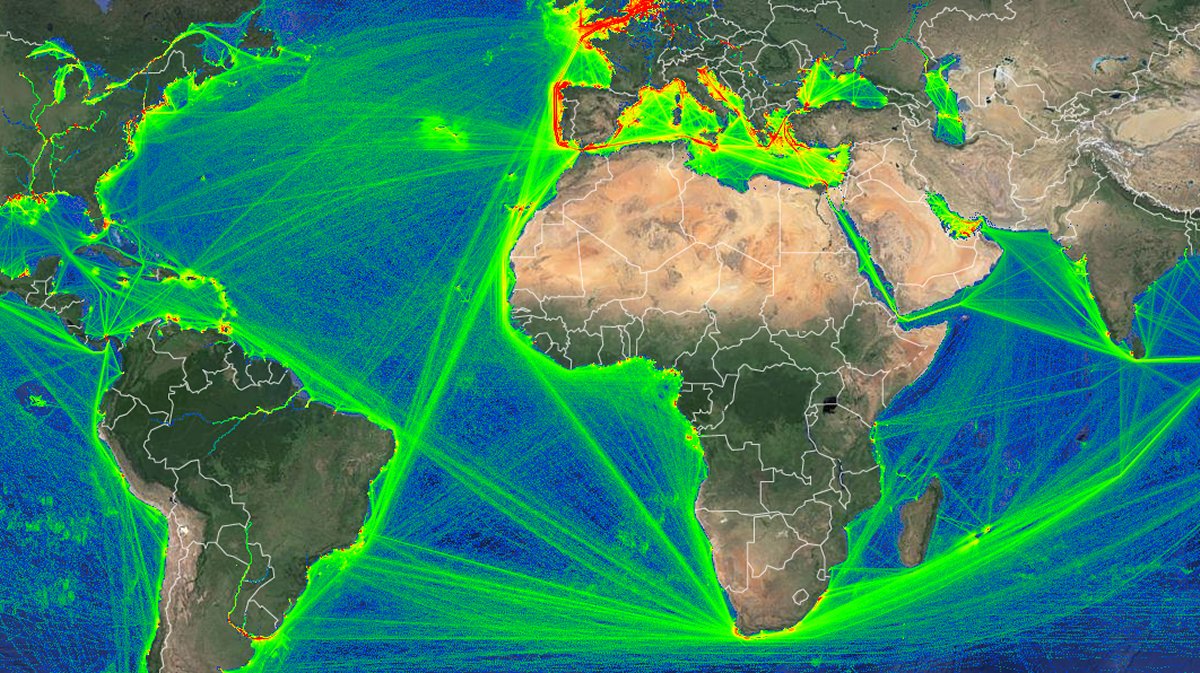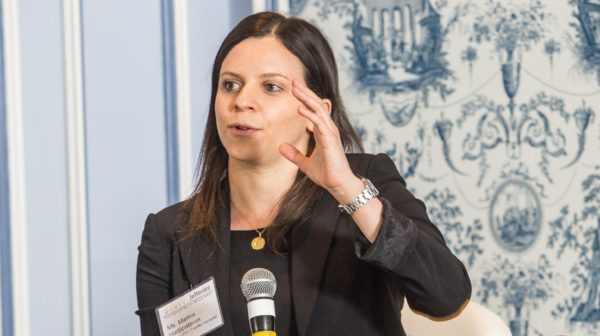Shipping faces more pressure to adopt new technological solutions

This could be a turning-point year for maritime tech startups — particularly those with a green twist. For a reason why, look no further than the January IPO roadshow presentation of ocean carrier ZIM (NYSE: ZIM).
“We are the new ZIM — the digital ZIM!” proclaimed the company’s CEO, Eli Glickman. He likened his company’s transformational aspirations to Airbnb, Amazon and Uber. He peppered his pitch with copious references to artificial intelligence, big data, sustainability, digital transportation and collaboration with startups.
The global shipping industry, long stubbornly resistant to change, now faces heightened external pressure from investors, competitors, customers, lenders and regulators to embrace technology and operate more efficiently. Simultaneously, more VC managers are setting their sights on ocean shipping.
“Maritime is gathering interest among VCs and private equity as the next industry to digitalize,” said Evan Efstathiou, CEO of SkySail Advisors and Burmester & Vogel, in an interview with American Shipper. He described current valuations as “amazing.”
Marina Hadjipateras, general partner of VC firm TMV, commented, “I see a huge surge in interest from VCs who haven’t focused on any of this before.”
TMV is currently in the midst of raising $60 million for a new fund that will focus, in part, on investments in supply chain and shipping startups. Earlier this month, the Ioannis Martinos-led Signal Group launched Signal Ventures to invest in “the growing activity in the maritime startup scene.”
Hadjipateras told American Shipper, “There are a lot more investors looking at this space. There’s a lot of capital out there. And there’s a lot of energy on all sides, from shipowners as well as founders. We’re seeing a huge amount of optimism in terms of what’s in store for the future.”
Low penetration versus other industries
For such a massive industry, ocean shipping still has a lot of low-hanging fruit left to pluck in terms of efficiencies.
If Efstathiou and Hadjipateras are right about the shift toward tech solutions, the shipowners of the future — including listed owners — should boast better margins.
“One reason there’s a lot of enthusiasm is that people see maritime as behind compared to other industries and compared to other transportation industries,” explained Efstathiou.

According to Hadjipateras, “A lot of the processes are still very old. Handwritten. On Excel docs. A lot of founders and engineers look at shipping as an age-old industry that needs to be disrupted. And VCs look at this as a white space. There haven’t been a lot of VCs looking at the shipping world before.”
Tech’s relatively low penetration in shipping was addressed this month at a a virtual conference held by the Hellenic American/Norwegian-American Chambers of Commerce (HACC-NACC).
According to Kyle Henderson, founder of Vizion, a startup focused on supply chain visibility, “This industry, compared to others, covers every geography. It is very difficult to deploy large-scale digitization solutions because they have to be highly specialized and localized. Not just for a specific country or region, but often to the company level. These companies built up different operations in different ways dating back to before digitization was a thing.”
Matt Heider, founder of Nautilus Labs, a startup focused on ship efficiency, told HACC-NACC attendees, “Culturally, there is a long sense of history in ocean shipping. So, they think about digitization in the context of centuries, such as moving from steam to internal combustion. There has always been a reticence to embrace solutions too early. They want to see very clearly what the ROI [return on investment] is.”
Heightened focus on emissions
That reticence is now lessening.
One reason: Regulations are compelling higher operational efficiency to reduce emissions. That, in turn, supports startups focused on finding those efficiencies, including Nautilus Labs, which raised $11 million in Series A funding in 2019 — with Microsoft and TMV among its investors — and Roberto Coustas-led DeepSea, which raised $3.7 million in April 2020.
In October, the International Maritime Organization (IMO) agreed to implement the Energy Efficiency Existing Ship Index (EEXI) to reduce carbon intensity on the hardware side and the Carbon Intensity Indicator (CII) to reduce carbon intensity on the operational side. The IMO is also committed to long-term decarbonization targets in 2030 and 2050.
“There’s a lot of excitement [in startup and VC circles] about emissions reduction,” confirmed Efstathiou. “There has been a shift in mindset within the industry, [which is now] embracing decarbonization, reducing emissions and measuring and mitigating the societal impacts of shipping.”
According to Heider, “In 2021, emissions are actually the primary topic. That wasn’t true three or four years ago.
“If you look at what’s coming out of the IMO for 2030 and 2050, that will require the use of more technology to track carbon to the level of each unit of cargo being transported at any point in time on a much more granular basis. That sets the industry up for the commercial change that’s needed to drive digitization.”
Pressure from cargo interest, banks, investors
Cargo interests generally focus on cheap, timely transport. If ships are low-tech — “dump trucks of the sea” — that’s generally acceptable. As long as they don’t sink and there are excess vessels vying for cargo, keeping rates low. Shipping traditionally suffers from overcapacity, so there has been little commercial incentive among cargo interests for new tech.
As Heider noted, “Historically, digitization has never been [incorporated] in commercial negotiations between charterers and owners.”
That’s changing due to widespread pressures to embrace ESG (environmental, social and governance).
In October, several of the world’s largest ship charterers signed the Sea Cargo Charter, an agreement designed to align chartering activity with the IMO’s decarbonization goals. Leading shipping banks signed a parallel initiative, the Poseidon Principles, in June 2019.
Institutional investors are also on the bandwagon, prompting listed shipowners to publish sustainability reports. All of the combined pressure from charterers, banks and investors should drive more technological adoption by owners seeking to enhance fuel efficiency and sustainability. That should increase opportunities for startups.
A sustainability focus “is mainstream now,” said Hadjipateras. “It’s not just nice-to-have. It’s need-to-have.”
According to Efstathiou, “If you look at the Sea Cargo Charter and the Poseidon Principles and this embrace of ESG, this has only just happened in just the past few years. This is a real tailwind [for shipping startups].”
Not just about emissions and efficiency
Most maritime tech companies focus on either making operations cost less or providing transparency on trade flows to inform strategic and trading decisions.
The latter category is the purview of companies including Cargometrics, AXSMarine, Kpler and Vortexa, among others. This segment is clearly attractive to investors: Vortexa closed $19 million in Series B round earlier this month.
The pitch is that the total addressable market (TAM) goes well beyond shipping.
Efstathiou explained, “Where people are really excited about the TAM is when you can go beyond the shipowners and operators and get to the commodity traders, oil companies, agriculture, insurance, financial risk, weather risk and people investing in paper [derivatives], not just physical commodities.”
The COVID effect
The initial onset of the COVID crisis had a negative effect on maritime startups. Shipping businesses went into survival mode. The last thing they had time for was trialing a new software solution.
That crisis mentality has now passed and COVID has actually increased the focus on tech. “There have been a lot of tech winners generally as a result of COVID,” said Efstathiou, who believes the broader valuation upside is cascading over to shipping startups.
According to Heider, “Shipping has always been imbued with a lot of trust in distributed teams. For example, the master of the ship is entrusted to make the right decision with minimal intervention. I think COVID brought that into starker relief. All the teams in shipping companies were distributed and felt the inefficiencies derived from those types of barriers.”
In other words, another prospect for startups: providing solutions that allow shipping’s distributed teams to work better with each other.
A further COVID effect was the disruption to ocean trade. This is exemplified by the headline-grabbing armada of ships stuck at anchor off Los Angeles and Long Beach. A technologist watching such scenes may ask: How can we help fix this?
“COVID has increased the priority placed on digitization,” said Henderson. “You have this 10 times or 20 times explosion in the need of shippers and receivers to understand when their goods are going to be arriving. [Before COVID] digitization was a priority but now it is very much in the top three in the executive suite when you talk about shipping companies.”
But there are caveats
This may all sound like a recipe for boom times in the VC-backed maritime startup space. But there are some big caveats.
First, people have been talking up the pending technological revolution of ocean shipping for years. Shipping’s historical aversion to change is deeply entrenched.
Second, IMO regulations make for good pitch fodder, but IMO decision-making is an extremely drawn-out, dysfunctional and unpredictable process. There are no guarantees that IMO member countries will come together on decarbonization.
Third, with regard to startups focused on vessel visibility, ship-location data is widely available through companies such as MarineTraffic. Much of the value-added intelligence comes from knowing who owns the cargoes — something no software solution can tell you.
Fourth, TAM numbers touted to VCs may be too high. The scope of global maritime trade is massive, but as Henderson pointed out, it’s highly segregated.
Newcomers also face competition from existing players for that TAM. In the voyage-optimization market, Veson Nautical is a long-established provider, while larger shipping companies may opt for in-house solutions.
Efstathiou also pointed out that “charterers themselves are investing heavily in tech. The guys who would benefit the most from technology are not looking to leave all this value out there for startups. They want to capture some of it for themselves. They’re saying: ‘Everyone needs our data and our transaction flow. Why don’t we build a platform and get the benefit of doing it?’”
In general, concluded Efstathiou, “This is probably the easiest it has ever been to raise capital [for a maritime startup], but at the same time, it’s harder for these startups to compete.”
‘Boat too big to turn’ finally turning?
Hadjipateras doesn’t see existing players as competition for newcomers.
“What’s happening now is that expert engineers [in startups] are becoming more accepted by shipping companies. So, partnerships are more viable. Founders may not have backgrounds in shipping but they are experts in technology. Shipping companies may not want to spend the time building that [technological expertise] in-house.
“If you look at the companies we invest in, a lot of what they’re doing looks similar to what huge corporations are doing. But we don’t see these corporations as competitors. We see them as possible acquirers or partners,” she said.
Just as ZIM touted partnerships with startups in its IPO roadshow, Hadjipateras sees the potential for shipping companies “to bring founders in-house and incubate startup companies.”
Henderson characterized the coming shift as an inexorable transition driven by outside forces. “It was like a boat that was too big to turn for so long,” he said of ocean shipping’s sluggish tech adoption.
“Now, the pressures of the outside world, the storm at sea, has pushed the captain to say, ‘We’ve got to make a change. We have to function differently than we did.’ Because nowadays, honestly, it’s change or goodbye.”
By Greg Miller, Senior Editor for American Shipper